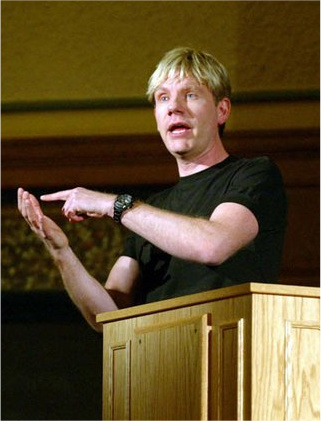In the same week as its Emissions Reduction Fund gets its first workout, the Abbott government announced it would support a contrarian think-tank. [Peter Boyer | 21 April 2015]
In this Gallipoli week we can be forgiven if we miss an event of note on Thursday, when the federal government is to announce results of its first Emissions Reduction Fund auction.
The government, too, seems to have its attention elsewhere. Apart from scant publicity around the closing of applications for ERF funding last week and some muted comment from environment minister Greg Hunt, there’s been barely a peep about it from that quarter.
All that suggests there’s not a lot riding on the event, but in this year of the Paris climate summit nothing could be further from the truth. This first auction (“tendering process” is a more accurate term) will be an early test of an idea that’s been used in other countries for specific purposes, such as funding development of renewable energy, but never on such a scale or covering such a wide range of activities.
In his latest media statement Hunt referred to the “strong interest” of Australian business in the widening array of opportunities to cut emissions, but that was as enthusiastic as he got, in sharp contrast to his ebullient publicising of the ERF a year ago.
When they haven’t been openly critical, economists have stayed silent on the ERF’s prospects for success. The lack of positive support seems to have the government nervous.
The scheme drew initially on methodologies developed for a subset of the Gillard government’s carbon pricing scheme, the Carbon Farming Initiative. While ditching the parent scheme, the Abbott government kept its child.
Along with the rest of the world, the government must make deep, early emissions cuts if it is to have an impact on climate. Improving the level of carbon stored in soils and trees is commendable, but these measures are slow burners, having little impact on real emissions in the coming decade.
Because of this the government has formulated other ERF abatement methods that can have an immediate or near-term impact, like reduced or captured coal mine emissions and more energy-efficient buildings, trucks, aircraft, refrigerators and air conditioning plants.
Coal-fired power generation is the really big one. If ERF-approved methods applying to that source turn out to work we’ll see a measurable reduction in the overall figure. But the record reveals that the only sure way to get significant cuts at coal power stations is to shut them down, for good.
The industry seems to be coming to that view too. Last week the biggest player in Australian coal-fired electricity, AGL Energy, began preparing itself and its shareholders for very different future.
In recent years AGL and Macquarie Energy, the company AGL bought last September, have expanded their portfolio of coal plants in both Victoria and NSW. But last Friday AGL’s new CEO, Andy Vesey, announced an abrupt U-turn.
Vesey declared that the company will close down all its coal-fired plants by 2050, and in the meantime will not buy any new plants or increase the capacity of the ones it currently owns.
What’s really interesting about Vesey’s announcement is the reason he gave for the decision: a desire to support the international goal of keeping global warming below 2C. “To support the Commonwealth government’s commitment to work towards the two degree goal, companies such as AGL need to take the lead,” he said.
Whatever he may say publicly about the AGL decision, privately Tony Abbott won’t welcome it. His plans for coal in Australia’s economic future include not just selling the stuff abroad but also burning it at home, allegedly because it makes cheaper energy than renewables.
The government’s determination to re-shape the climate debate on its terms knows no bounds. Last week it found $4 million to help bring the “Copenhagen Consensus Center methodology” of the controversial Danish academic Bjørn Lomborg to the University of Western Australia.
Lomborg’s speciality is politics, not science, but he claims that scientists have exaggerated the need to cut rapidly and deeply into emissions and says money is better spent on adapting to a changing climate. Having lost Danish government support in 2012, Lomborg will be pleased to have a new home base.
Others won’t be so pleased, having watched in dismay as the government pursues big cuts to science and higher education spending. Against that backdrop, the decision to fund Lomborg is a disgrace.
It’s yet more evidence that the Abbott government cares little about lowering carbon emissions, and another blow to the credibility of its Emissions Reduction Fund.

